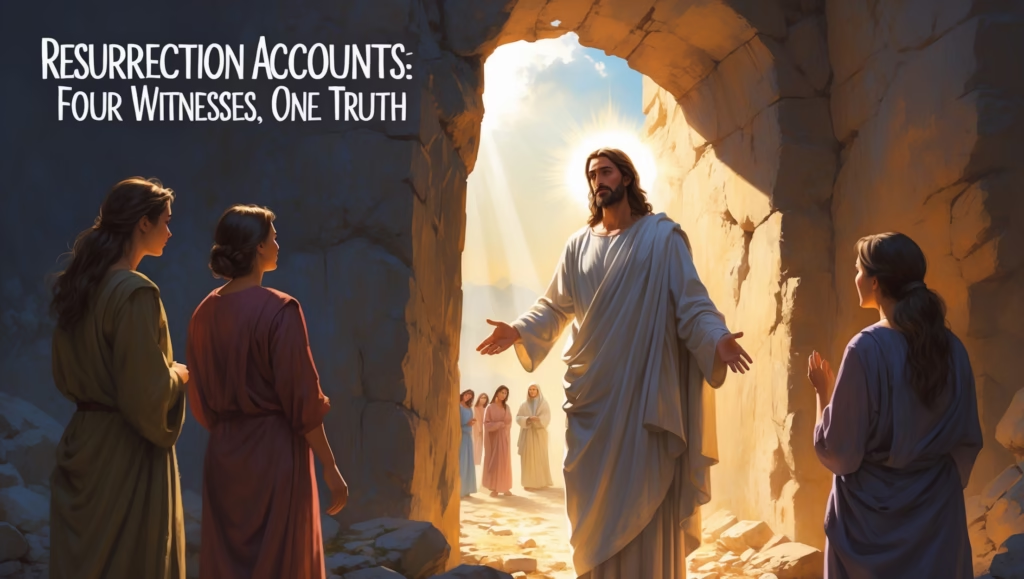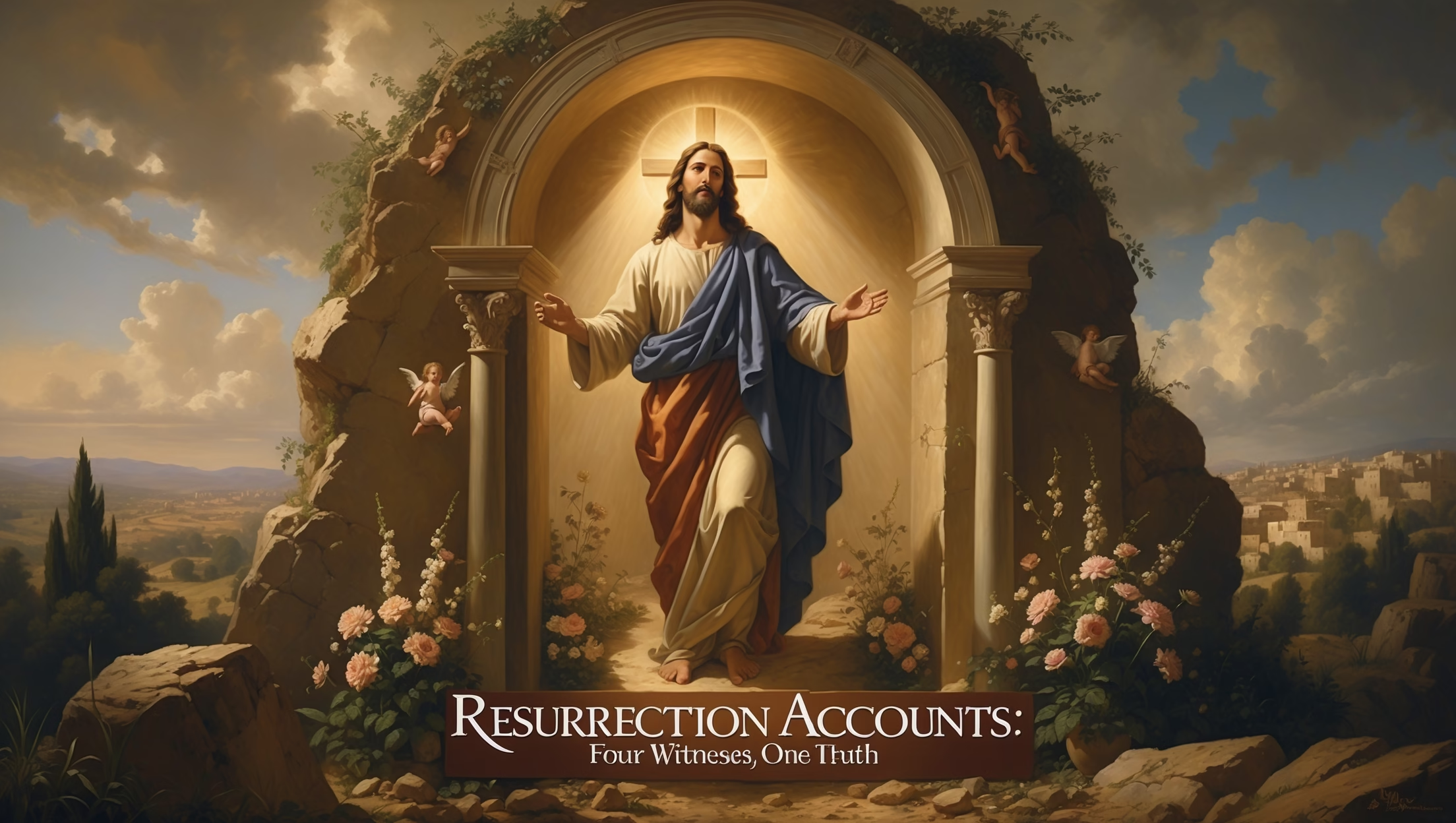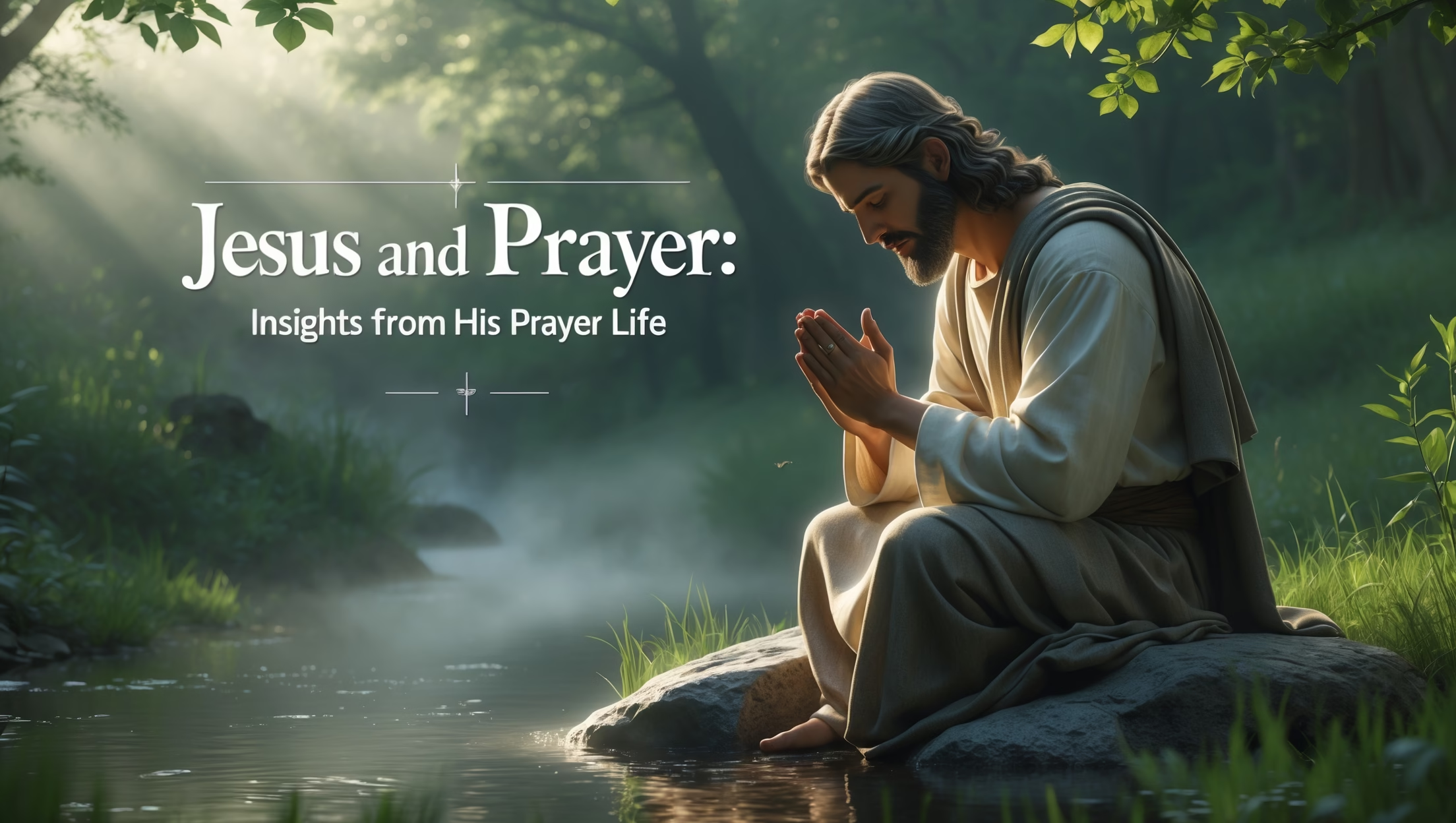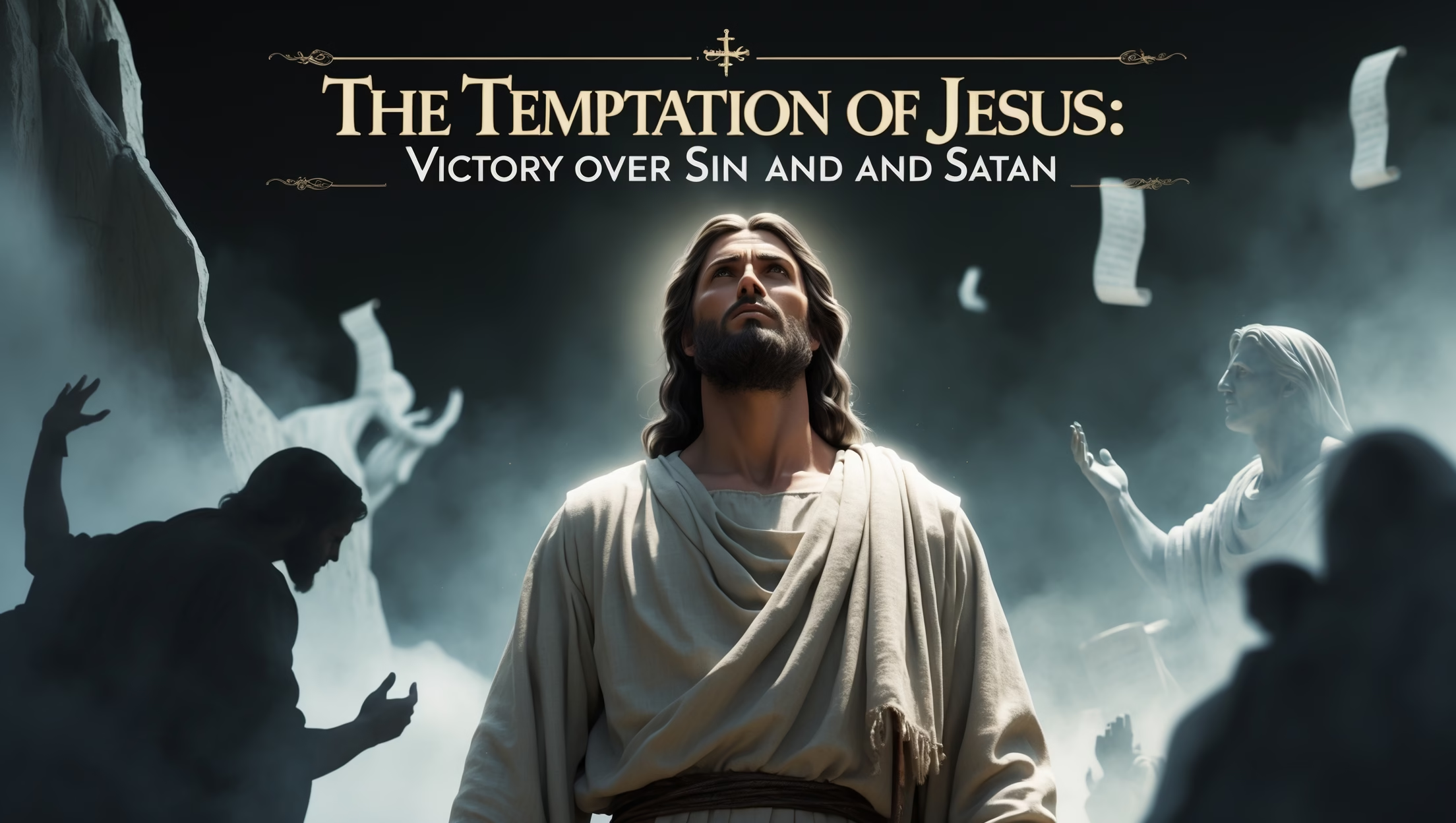Harmonizing the Easter Narratives
The resurrection of Jesus stands as the linchpin of Christian faith. Yet the four Gospels—Matthew, Mark, Luke, and John—present accounts that differ in certain details. At first glance, these variations have fueled skepticism and debate. A closer examination, however, reveals that rather than contradicting each other, these accounts complement one another, offering multiple perspectives on a singular, transformative event.

Apparent Discrepancies
Who Visited the Tomb?
- Matthew: Mary Magdalene and “the other Mary” arrive to anoint Jesus’ body (Matthew 28:1).
- Mark: Mary Magdalene, Mary the mother of James, and Salome come to the tomb (Mark 16:1).
- Luke: A larger group, including Mary Magdalene, Joanna, and other women, visit the tomb (Luke 24:10).
- John: Mary Magdalene alone arrives early, weeping outside the tomb (John 20:1).
The differences reflect each evangelist’s emphasis rather than a contradiction. Matthew highlights symbolic “two Marys” as witnesses; Mark emphasizes continuity with his Passion narrative; Luke emphasizes broader community; John centers on a personal, intimate encounter.
Angelic Announcements
- Matthew: An angel rolls back the stone and announces, “He is risen” (28:5–6).
- Mark: Two young men in white tell the women, “Go, tell his disciples and Peter” (16:5–7).
- Luke: Angels remind the women, “Remember how he told you” (24:6–7).
- John: No explicit angelic announcement; instead, Mary encounters the risen Christ directly (20:11–18).
These variations reflect differing narrative strategies. Matthew emphasizes proclamation; Mark emphasizes mission; Luke emphasizes memory and fulfillment; John emphasizes personal revelation.
First Appearances of the Risen Jesus
- Matthew: Appears to the women in Jerusalem (28:9–10).
- Mark: Original ending lost; the earliest manuscripts conclude with the women fleeing in fear (16:8).
- Luke: Appears on the road to Emmaus and later to the disciples in Jerusalem (24:13–49).
- John: Appears first to Mary Magdalene, then to the disciples (20:11–23).
Rather than conflicting, these appearances provide a multi-dimensional portrait: Jesus is recognized in diverse contexts—by women, by traveling disciples, and by the community in Jerusalem.
Understanding the Differences
Ancient Biography Conventions
First-century biographies (bios) were not modern chronologies. Authors arranged events thematically to convey theological truths rather than strict timelines. Key points:
- Theological Focus Over Chronology: Each Gospel writer tailored the narrative to emphasize resurrection significance for their audience.
- Eyewitness Perspectives: Different witnesses emphasized distinct elements—the women, angels, empty tomb, or personal encounters.
- Memory and Oral Tradition: Early Christians transmitted stories orally; variations naturally emerged while preserving core truths.
Thus, the variations are not errors but reflections of a vibrant, eyewitness-driven tradition.
Harmonizing the Accounts
By considering context, emphasis, and purpose, the four narratives can be harmonized:
- The Tomb Discovery: Women visit early on Sunday. Multiple women could have arrived at slightly different times.
- The Angelic Message: Angels appear, confirming Jesus’ resurrection and reminding witnesses of His previous teachings.
- The Risen Christ: Jesus appears multiple times—to Mary Magdalene, on the road to Emmaus, to the disciples—showing both personal and communal dimensions.
- Mission Mandate: Women and disciples are commissioned to proclaim the resurrection, linking the empty tomb with the ongoing spread of the Gospel.
In this light, each account contributes complementary details to a holistic understanding.
Theological Significance
- Women as Primary Witnesses: In a patriarchal society where women’s testimony was often discounted, the Gospels elevate women as the first proclaimers of the resurrection. This highlights the subversive, inclusive nature of God’s Kingdom.
- Empty Tomb as Historical Anchor: Regardless of narrative differences, all accounts affirm an empty tomb—grounding Christian faith in a concrete, historical event.
- Personal and Communal Revelation: Resurrection appearances encompass both intimate encounters (Mary Magdalene, John 20) and communal recognition (disciples, Luke 24), emphasizing that the risen Christ transforms both individual hearts and the faith community.
- Mission-Oriented Resurrection: The post-resurrection appearances are not only proofs of divinity but also catalysts for mission. The disciples are sent to bear witness, linking the resurrection to the expansion of the Church (Acts 1:8).
Modern Reflections
For skeptics, the variations in detail illustrate the human dimension of Scripture: eyewitnesses remembered and emphasized different elements, yet the core truth—the resurrection—remains unshaken.
For believers, these narratives demonstrate a God who engages the world in multifaceted ways, meeting people where they are: in grief, doubt, confusion, and wonder.
The resurrection accounts challenge readers to look beyond minor discrepancies and focus on the central claim: death has been defeated, hope is renewed, and the risen Christ calls all to participate in His mission.
Conclusion
The four Gospel accounts, though varied in detail, converge on one undeniable truth: Jesus rose from the dead. The apparent discrepancies are not obstacles to faith but invitations to explore the richness of eyewitness testimony, the nuance of theological storytelling, and the transformative power of the resurrection.
The Easter narratives, harmonized, reveal a multidimensional Savior—encountered in grief, recognized in community, proclaimed through mission, and ultimately, victorious over death. For Christians, this is the foundation of hope; for all humanity, it stands as history’s most profound claim: life triumphs where death once reigned.










